China’s nuclear missile silo expansion: From minimum deterrence to medium deterrence
By Hans M. Kristensen, Matt Korda | September 1, 2021
 Satellite images show hundreds of missile missile silos under construction under inflatable domes at three missile fields and a training area in north-central China. Satellite images © 2021 Maxar Technologies and © 2021 Planet Labs, Inc. All rights reserved. For media licensing options, please contact [email protected]
Satellite images show hundreds of missile missile silos under construction under inflatable domes at three missile fields and a training area in north-central China. Satellite images © 2021 Maxar Technologies and © 2021 Planet Labs, Inc. All rights reserved. For media licensing options, please contact [email protected]
Editor’s note: Want to hear more from the experts on this topic? Register now for our Sept 21 virtual program.
US defense officials have claimed for several years that China is planning to at least double its nuclear warhead stockpile over the next decade, but without providing the public any details to back up their claim. That changed this summer, when two nongovernmental organizations—our own included—disclosed construction of what appears to be hundreds of new missile silos in central China.
Not surprisingly, reactions from defense hawks and arms controllers to this development span a wide range. Some claim that China is becoming an even greater nuclear threat that requires the United States and its allies to beef up their militaries even more. Others claim that China is responding to US provocations, and that arms control is the only way forward.
Most will probably use the disclosure to reaffirm existing beliefs. But that would be a mistake. The development requires all sides to think hard about what it means for Chinese nuclear policy, how it plans to operate its nuclear forces, how other nuclear-armed states will or should respond, and what the international nuclear nonproliferation and arms control community can and should do to reduce nuclear risks.
How many silos are under construction? The Chinese government has made no official public announcement about what it is building, and the nature, scale, and role of the suspected missile silos remains uncertain. (Some have even suggested they are not silos, but windmills.) But the satellite imagery that we have analyzed, combined with US government officials issuing apparent confirmations (here, here, and here), indicate that the construction involves hundreds of missile silos.
The first missile silo field near Yumen was disclosed by the Middlebury Institute in late-June. The second field near Hami was disclosed by the Federation of American Scientists in late-July. The third field near Ordos (Hanggin Banner) was disclosed by a military research unit at Air University in mid-August.
The three sites are in different stages of construction. The Yumen field began construction in March 2020 and appears to include 120 silos. Construction of the Hami field began in February 2021 and might eventually include 110 silos. The Ordos field, which began construction in April or May 2021, has a different layout and so far only appears to include about 40 silos (it could potentially grow later). Each missile silo field appears to include a number of other facilities that might be launch-control centers, bases, and support facilities.
Construction of the Yumen, Hami, and Ordos missile silo fields follow shortly after construction began of half a dozen silos that we discovered at the PLARF training site near Jilantai in Inner Mongolia, initially described in September 2019 and reported expanding further in February 2021.
In addition to these four projects, open-source researchers noted in 2020 that China might also be building a small number of silos near its traditional missile silo area near Checunzhen (Sundian) in the Henan Province.
All told, these discoveries indicate that China might be constructing nearly 300 new missile silos.
Why is China building so many silos? Missile silos are nothing new for China, which has deployed intercontinental ballistic missiles (ICBMs) in silos since the early 1980s. It is estimated that China currently has about 20 silos for the old (but modified) liquid-fuel DF-5 ICBM. However, building nearly 300 silos is certainly new. The decision to do so has probably not been caused by a single issue but by a combination of factors. In all these cases, it is important to remember that Chinese planning is not solely occupied with the United States, but also what Russia and increasingly India are doing:
Reducing the vulnerability of China’s ICBMs to a first strike: China is concerned that its nuclear deterrent is too vulnerable to a US (or Russian) surprise attack. The previous small number of fixed silos have long been seen as particularly vulnerable. According to the US Central Intelligence Agency, China’s decision to develop the modern road-mobile ICBMs we see today was a reaction to the US Navy’s deployment of Ohio-class Trident ballistic missile submarines in the Pacific. Road-mobile launchers are less vulnerable, but they’re not invulnerable. By increasing the number of silos, more ICBMs could potentially survive a surprise attack and be able to launch their missiles in retaliation. This action-reaction dynamic is most likely a factor in China’s current modernization.
Overcoming potential effects of missile defenses: Chinese planners are likely concerned that increasingly capable missile defenses could undermine China’s retaliatory capability. The US Sentinel (and particularly the Safeguard) missile defense systems in the 1960s and 1970s were partly intended to defend against Chinese ICBMs. Chinese officials reacted to the US withdrawal from the Anti-Ballistic Missile (ABM) Treaty in 2002 by saying that they would compensate as necessary. Part of that reaction might have been the decision to equip the DF-5B ICBM with multiple independently targetable reentry vehicles (MIRVs). The new DF-41 ICBM is also MIRV-capable and the future JL-3 SLBM will be capable of carrying multiple warheads. By increasing the number of silo-based, solid-fuel missiles and the number of warheads that they can carry, Chinese planners might be seeking to ensure that a sufficient number of warheads will be able to penetrate missile defense systems.
Transitioning from liquid-fuel to solid-fuel silo missiles: China’s old liquid-fuel DF-5 ICBMs take a long time to fuel and align before they can launch. This makes them exceedingly vulnerable to attack. Handling liquid fuel is also cumbersome and dangerous. By transitioning to solid-fuel missile silos, the survivability, operational procedures, and safety of the ICBM force would be improved significantly.
Increasing the readiness of the ICBM force: China’s missiles have long thought to be deployed without nuclear warheads installed under normal circumstances. This peacetime posture is in stark contrast to US and Russian ICBMs, which are deployed fully ready and able to launch on short notice. In a crisis, China would gradually increase the readiness of its missiles and eventually load the warheads if a decision was made to do so. But this process takes time and could potentially be detected and cause an adversary to strike first. With military strike capabilities improving and strategic competition with the United States (and also with India, to some extent) increasing, Chinese leaders might have decided they need to increase the readiness of the ICBMs to ensure they’re capable of launching before being destroyed in an attack.
Balancing the ICBM force: The construction of additional silos could potentially also be motivated by a desire to better balance the ICBM force between silo- and road-mobile launchers. About 80 percent of China’s roughly 100 ICBMs are currently mobile, a number that is still increasing. Yet with nearly 300 new silos, the future ICBM force would flip to a focus on silo-based missiles backed up by a smaller number of mobile launchers.
Increasing China’s nuclear strike capability: China’s “minimum deterrence” posture has historically kept the number of nuclear launchers at a relatively low level. But the Chinese leadership might have decided that it needs more missiles with more warheads to hold more adversary facilities at risk. This is not just about targeting the United States and its facilities in the Pacific. Russia is also increasing its military forces, and India is developing several types of longer-range missiles that appear to be explicitly intended to target China. All of these adversaries influence China’s decision on how many and what types of nuclear weapons it needs.
Increasing the number and types of strike options: China has traditionally maintained a rather simple nuclear strategy, with nuclear weapons serving as a deterrent with a secure retaliatory counterattack option as a last sort. But Chinese leaders might have decided that the nuclear strategy requires more gradual counterattack options, or waves. This would allow China to respond to limited nuclear attacks instead of launching everything in one retaliatory strike. Both Russia and the United States transitioned to such a strategy decades ago.
Increasing national prestige: China is getting richer and more powerful and has set ambitious national and international agendas to become an equal player on the world stage. It might not seek nuclear parity with the United States and Russia, but big powers have bigger arsenals so the Chinese leadership might have decided that China’s nuclear capability needs to be bigger in order to better reflect its status as a great power.
What does it mean for Chinese nuclear policy? Although we don’t yet know how China plans to operate its new missile silos, the scale of the construction––which is happening in addition to deployment of increasing numbers of road-mobile missile launchers, ballistic missile submarines, and development of a nuclear bomber force––appears to contradict China’s long-held posture of “minimum deterrence.”
Instead, China now appears to be moving from a “minimum deterrent” to a “medium deterrent” that will position China between the smaller nuclear-armed states (France, Britain, Pakistan, India, Israel, and North Korea) and the two big ones (Russia and the United States).
Although China is unlikely to reach nuclear parity with the US and Russian nuclear arsenals in the foreseeable future, the apparent build-up is significant by Chinese standards, in comparison with both Russia and the United States, as well as in international historical context. The number of apparent missile silos under construction is similar to the total number of nuclear warheads in the current Chinese stockpile; it exceeds the number of missile silos operated by Russia; it is approaching the number of silos operated by the United States; and it constitutes the largest silo construction since the United States and Russia established their ICBM forces during the Cold War.
The Chinese government is unlikely to officially declare that it is abandoning its minimum deterrence strategy, and its threshold for what constitutes a “minimum” deterrent will likely continue to shift as China expands its nuclear arsenal. In fairness, all nuclear-armed states claim they only have the minimum number of nuclear weapons they need, no matter how many nuclear weapons they have. Yet the build-up creates a dilemma for the Chinese government because it has always emphasized that China’s nuclear posture was different than that of the United States and Russia, and that China would not participate in any nuclear arms race. But if 200-300 nuclear weapons constituted a minimum deterrent yesterday, how can two, three, or four time that many nuclear weapons also constitute a minimum deterrent tomorrow?
Some analysts have suggested that China might be planning a “shell game” and may only intend to load a smaller number of missiles into the new silos. This is certainly a possibility; however, the discovery of multiple apparent silo fields raises some questions about this hypothesis: If China wants to do a shell game, wouldn’t one large silo field be sufficient? Why build more than one?
How China choses to operate the new missile silos is also important. China has historically kept its nuclear missile forces on a low level of readiness, with nuclear warheads stored separately from the missiles under normal circumstances. In April, STRATCOM commander Admiral Charles Richard told Congress that although China continues to keep “the majority of its forces in a peacetime status, increasing evidence suggests China has moved a portion of its nuclear force to a Launch on Warning (LOW) posture and are adopting a limited ‘high alert duty’ strategy.” Admiral Richard did not specify if that means missiles on “high alert duty” are loaded with nuclear warheads. If they are, that would constitute a significant change in the Chinese leadership’s traditional control of nuclear weapons that could potentially also open up the possibility of ballistic missile submarines deploying with nuclear warheads onboard. A similar assessment, including an explicit connection to China’s new ICBM silos, was also mentioned in the Pentagon’s 2020 report on Chinese military developments. Additionally, after we disclosed the second missile silo field, a State Department official told The Economist that China since 2017 has “conducted exercises involving launch-on-warning, and now has deployed at least one satellite into orbit for its [LoW] posture.”
If China is moving toward a launch-on-warning or launch-under-attack posture with at least a portion of its missile force loaded with nuclear warheads, then China appears to be moving in the direction of what Russia and the United States have done for decades. Both these countries responded to each other’s modernization and threats by increasing the readiness of the forces. Both defended their moves as prudent and stabilizing—and continue to do so.
Admiral Richard also told Congress that the capabilities provided by China’s modernization including a large number of solid-fuel ICBMs on launch-on-warning “bring into question China’s stated “No First Use” policy declaration…“ However, that is not necessarily the case. It is possible that China’s new silo-based systems––plus the development of new early-warning systems––could instead be intended to safeguard the survivability of its retaliatory nuclear forces in the face of what China considers to be growing threats against them. Chinese officials have publicly rejected adopting a launch-on-warning policy, suggesting that it would be incompatible with China’s longstanding no-first-use policy. Indeed, China could potentially move to a launch-on-warning posture with hundreds of ICBMs on high alert with nuclear warheads loaded and still maintain a no-first-use policy. Missiles launched in response to warning of an incoming attack would not be first use but retaliation in response to an attacker’s first use.
Whether these developments will be stabilizing or help fuel a more dangerous nuclear dynamic in the future remains to be seen, but STRATCOM’s recent testimony to Congress suggests it sees China’s actions as anything but stabilizing:
“To fully assess the China threat, it is also necessary to consider the capability of the associated delivery system, command and control, readiness, posture, doctrine and training. By these measures, China is already capable of executing any plausible nuclear employment strategy within their region and will soon be able to do so at intercontinental ranges as well. They are no longer a ‘lesser included case‘ of the pacing nuclear threat, Russia.” [Emphasis in original.]
What to do about it? The scale of the Chinese missile silo construction, combined with the other elements of its nuclear build-up, are unprecedented in Chinese nuclear history. It underscores that China’s nuclear posture has entered a new dynamic phase that requires new attention from the international community. Other countries will be responding politically and militarily.
The Biden administration is now preparing its Nuclear Posture Review (NPR) that will outline the role and structure of the US nuclear posture for the next decade. When he was vice president and again during his presidential election campaign, Joe Biden spoke in favor of reducing the numbers and role of nuclear weapons. But Admiral Richard has publicly been making it quite clear that he opposes US significant changes: “For the first time in history, the nation is facing two potential strategic peer, nuclear-capable adversaries at the same time, who must be deterred differently. Here’s the challenge. I don’t have the luxury of deterring potential adversaries one at a time…We have to deter all, all of the time….Clear-eyed, threat-informed decision making will avoid unintentional and premature policy and programmatic changes that affect US strategy.”
Admiral Richard suggested that the New Strategic Arms Reduction Treaty (New START) limits his ability to increase targeting of China in response to its build-up: “We are treaty limited to 1,550 accountable nuclear weapons by the New Start Treaty. That’s…what’s available to me to accomplish all the objectives the President has given me…”
The NPR obviously will need to consider carefully how the Chinese build-up affects US nuclear force requirements. But since it is unlikely to recommend an increase of the US nuclear arsenal, it will have to adjust the objectives set by the president so that STRATCOM can deter both Russia and China with the exiting force level. That requires an understanding of why China is increasing its nuclear arsenal. But Admiral Richard declared (and STRATCOM later tweeted) that he thinks “it doesn’t matter why China is & continues to grow & modernize [its nuclear and conventional forces]. What matters is that they are building the capability to execute any plausible nuclear employment strategy…”
Such a warfighter mindset is obviously inadequate if the NPR is to balance force levels, resources, and objectives. Other elements of the US government will also have to weigh in. But it is a classical deterrence dilemma: How to deter an adversary sufficiently so it doesn’t attack you or your allies, while at the same time not threaten it so much that it reacts by building up its forces and increases the threat against you and your allies further? China’s build-up is only the latest chapter in long history of military posturing shaped by US, Russian, Indian, and domestic factors. It seems unlikely the Biden administration or Congress are willing to significantly increase US nuclear forces. So, the NPR will have to strike a balance.
The NPR will likely also set objectives for US arms control and nonproliferation policy. In reaction to the disclosure of the first missile silo site, the State Department said “it reinforces the importance of pursuing practical measures to reduce nuclear risks… [and] highlight why it’s in everyone’s interests that nuclear powers talk to one another directly about reducing nuclear dangers and avoiding miscalculations. We encourage Beijing to engage with us on practical measures to reduce the risks of destabilizing arms races, potential—potentially destabilizing tensions.”
At the Review Conference of the nuclear Non-Proliferation Treaty (NPT) (currently scheduled for early 2022), China will undoubtably stand out among the five declared nuclear weapon states as being in violation of its obligations under the treaty. Although the treaty does not explicitly prohibit a nuclear weapon state from modernizing—even increasing—its nuclear forces, China’s unparalleled and increasing growth of its nuclear arsenal and its refusal to join nuclear arms limitations talks is certainly in contradiction with the spirit of the treaty and the pledge under Article VI to “pursue negotiations in good faith on effective measures relating to cessation of the nuclear arms race at an early date and to nuclear disarmament,” which China and the other nuclear weapon states party to the treaty reaffirmed in 2020.
Non-nuclear weapon states party to the NPT should make clear their objections to the Chinese build-up—as well as to any other nuclear weapons state increasing its arsenal or refusing to pursue negotiations. But they must do more than that and double their efforts to incite the nuclear-armed states to reducing their military competition, freeze their nuclear arsenals, and honor their obligation to negotiate additional limits. Many non-nuclear countries have joined the Treaty on the Prohibition of Nuclear Weapons in an effort to invigourate progress toward the elimination of nuclear weapons. The nuclear weapon states and their allies reject the treaty and argue that the step-by-step approach of the NPT framework is the “only practical option for making progress towards nuclear disarmament.” Given that three of the five nuclear weapons states party to the NPT are now increasing their arsenals, the step-by-step approach appears to be going in the wrong direction.
Editor’s note: Want to hear more from the experts on this topic? Register now for our Sept 21 virtual program.
Together, we make the world safer.
The Bulletin elevates expert voices above the noise. But as an independent nonprofit organization, our operations depend on the support of readers like you. Help us continue to deliver quality journalism that holds leaders accountable. Your support of our work at any level is important. In return, we promise our coverage will be understandable, influential, vigilant, solution-oriented, and fair-minded. Together we can make a difference.
Keywords: China, Chinese missile silos, deterrence, missile silos, nuclear policy
Topics: Nuclear Risk, Nuclear Weapons












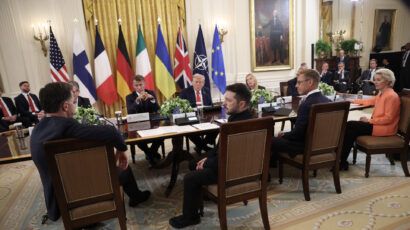
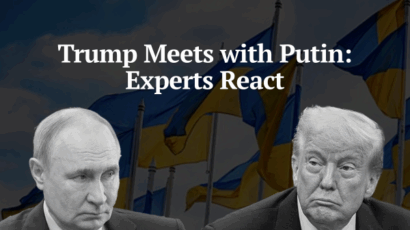
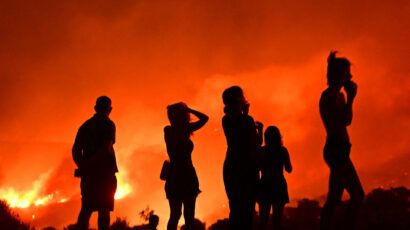
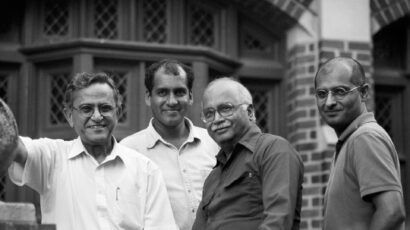
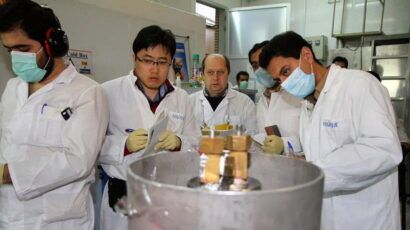
Let me see…The US is upgrading nukes for $1.3 trillion, has a full compliment of trident submarines, missile silos, bomber aircraft. In the next 25 years China will run out of water, run out of its domestic food production as farmlands sink underseas, and the recent 800 million out of poverty will fall back in. Best be focused on their missiles, something we can greatly profit from, in defending against.
in the event of climate change, I reckon American, Europe and Japan will be hurt more. This would be due to: 1. the effect on the Atlantic currents which transfer heat to NE America and also to Europe which is mostly at Canadian latitudes. The Pacific currents are much simpler and less prone to disruption from melting ice. 2. the much longer coastlines of Europe, North America compared to China. 3. in Europe, North America and Japan, the population distribution is skewed towards the coasts. In comparison, China’s population distribution is skewed more inland. You can look at the population… Read more »
This analysis is degraded by suggesting Russia poses a nuclear threat to China when cooperation is increasing.. Uncle Sam has always been the primary aggressor
Re: The doubling of China’s nuclear warhead stockpile
By planning to build hundreds of new missile silos, China encourages other nuclear powers to plan to do the same thing, which is to expand their stocks of nuclear warheads. This factor is a danger to the entire planet. That is why the non-nuclear weapon states parties to the NPT must object to this chinese ambition.
Ascendino Santos Souza, Theoretical scientist
What is the strategic value of packing missile silos so tightly together?
The satellite imagery shows the densely packed Chinese “missile silos” are spaced roughly 2-3 kilometers apart over an area of hundreds of square kilometers which would render them highly susceptible to a preemptive nuclear strike.
In comparison US Minute Man missile field silos are spaced roughly 8 kilometers apart and spread out over areas comprising tens of thousands of square kilometers.
https://www.nps.gov/articles/mimiarmsrace-09.htm
https://scholar.harvard.edu/files/matthew_bunn/files/bunn_uncertainties_of_a_preemptive_nuclear_attack.pdf